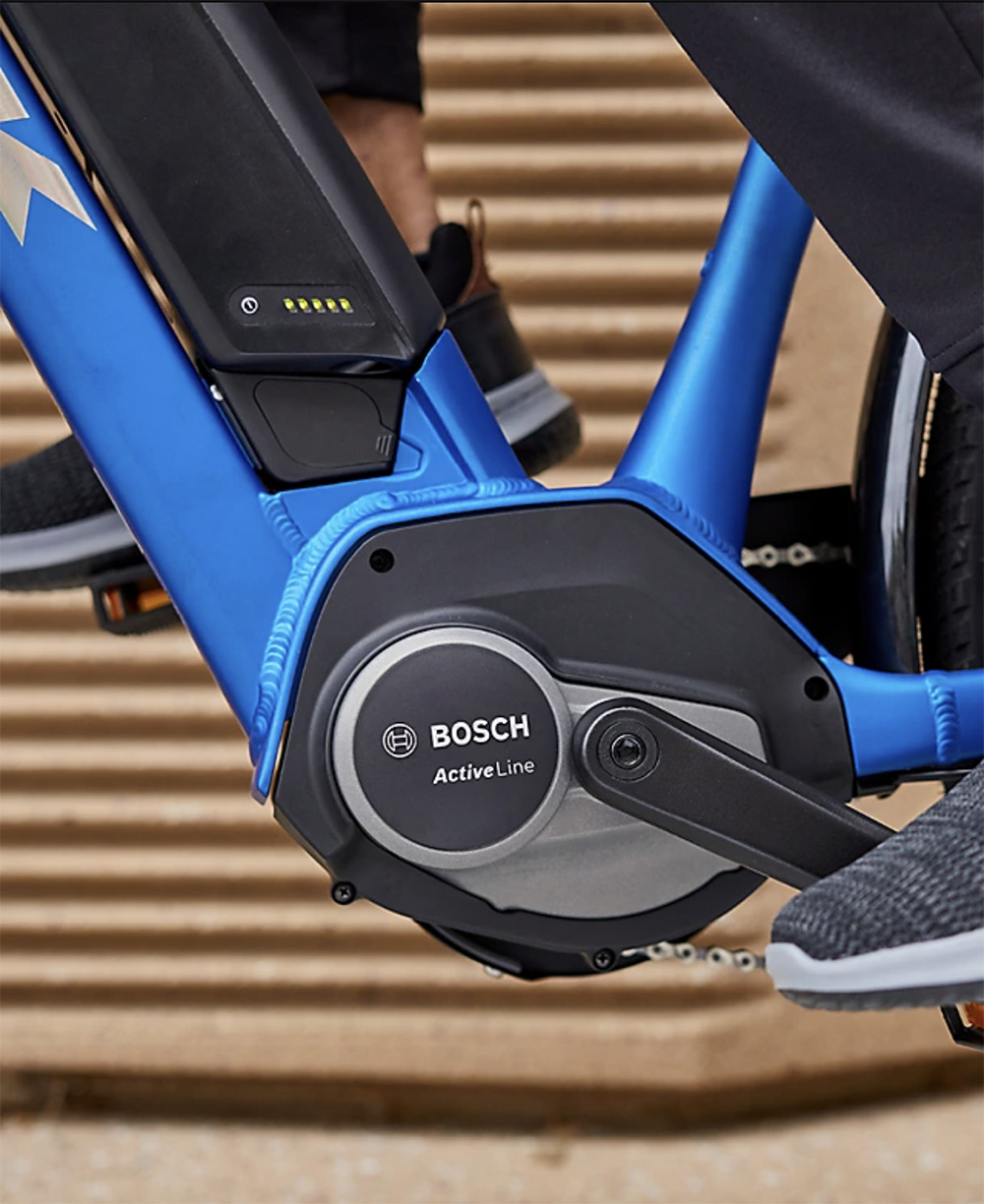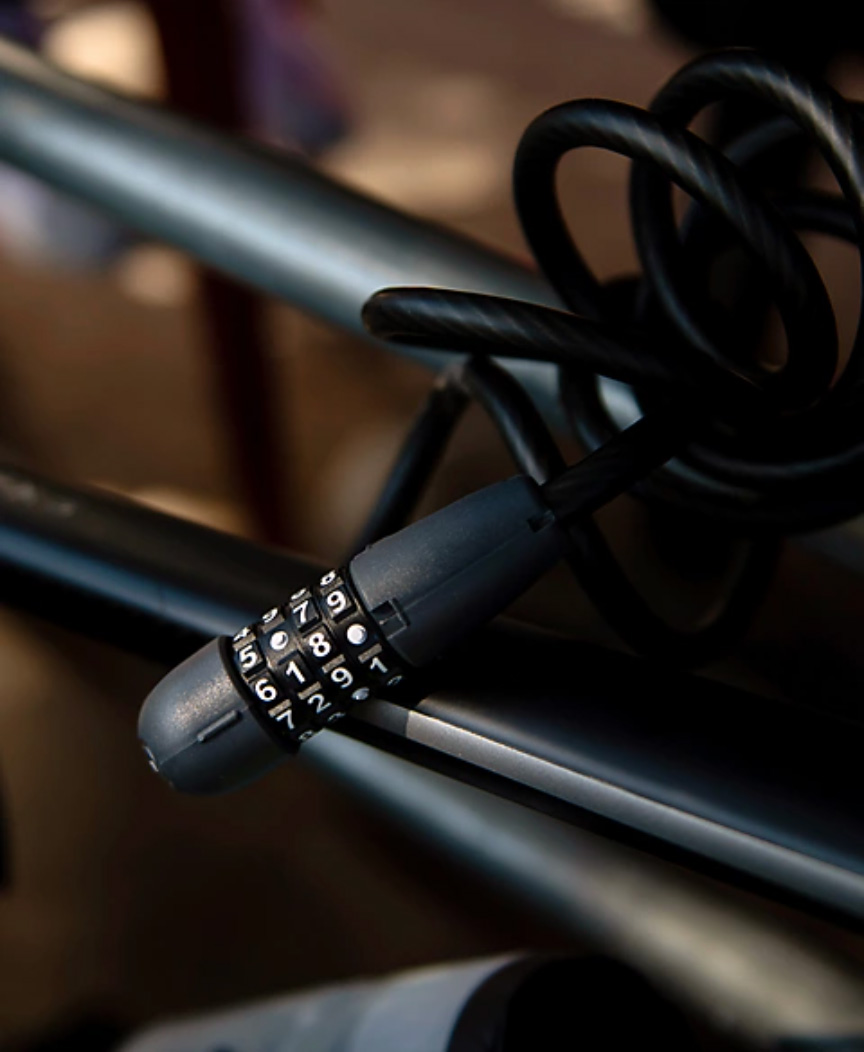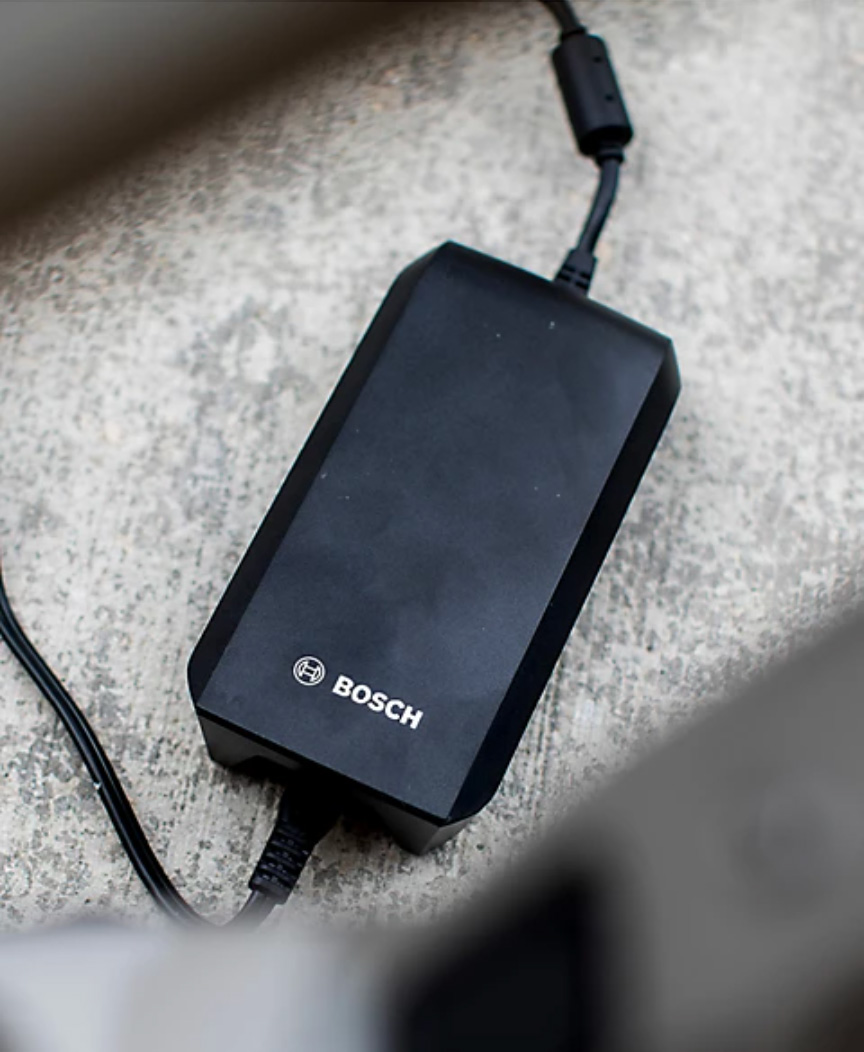
Electric Bike Buyer's Guide
Electric bikes can help you do more and go farther than you ever thought possible. And they’re a blast to ride! This guide will teach you all about the benefits of e-bikes, and it’ll also help you choose the right one for your style of riding and tell you everything you need to know about caring for it.

What is an electric bike?
Electric bikes (also known as e-bikes and electric assist bikes) amplify your pedaling power thanks to an electric drive system. There are many different kinds of e-bikes, but all of them use an electric motor and battery to help you power your bike. Most have what’s called a controller that lets you choose the amount of power the system provides.

Is an e-bike right for me?
While e-bikes are a super fun and easy way to get around, they might not be right for everyone. Here’s a brief comparison of electric bikes and other popular modes of transportation.
Electric bikes vs regular bikes
Traditional bikes don’t give you a boost to help you go faster and farther. But they are lighter and generally less expensive than e-bikes. Both are a great way to get exercise!
Electric bikes vs electric scooters
Electric scooters are compact and easy to maneuver in the city. Scooters shine on short, intra-city trips when you want to get somewhere faster than you can walk, but they won’t necessarily replace car trips. Plus, they’re more dangerous and less regulated than electric bikes, and they aren’t always available when you need one.
Electric bikes vs cars
Cars can take you on much farther and faster trips, you have to worry less about weather conditions, and you can haul a lot. But cars are much worse for the planet than e-bikes are, and cars are more expensive initially and over time—consider maintenance, gas, licensing, and insurance costs. Plus, you aren’t getting exercise and you have to deal with traffic and parking.
Electric bikes make more possible
E-bikes let you go farther and faster, and help you do more by bike. There’s an e-bike for everyone, no matter if you’ve never had a bike before, are coming back from an injury, want to keep up with faster riders, or just want to have fun on every single ride. E-bikes flatten hills, let you carry heavier loads, and help you cut back on car trips. The best part? You still get the benefits of a traditional bike, like exercise, time outside, and not having to sit in with traffic jams or find parking.

It’s easy and fun to get out and ride
Whether you’re coming back from an injury, can’t ride as far as you’d like anymore, or are just thinking about getting a bike for the first time, electric bikes are an awesome option. The extra boost helps you get out for exercise, enjoy the outdoors, and put less strain on your body than a traditional bike.

Ride farther, faster, and right up hills
If hills are discouraging you from riding a bike, electric bikes are the perfect solution! The boost will help you power right up hills, and it amplifies your level of fitness so longer, faster trips are always within reach. No more worrying whether or not you can make it!

Replace car trips and commutes
Electric bikes make long bike commutes super feasible, and make any commute more enjoyable and much less sweaty than on a traditional bike. Plus, the boost lets you carry more on errand runs, giving you yet another reason to take your e-bike instead of your car! You can feel good about getting exercise while lessening your impact on the environment.
Anatomy of an Electric Bike


1 Electric bike motors
The main types of e-bike motors are hub motors and mid-drive motors. Hub motors are typically mounted in the rear wheel while mid-drive motors are located in the same area as the pedal cranks and bottom bracket. Mid-drive motors are more efficient, feel more natural while pedaling, and are easier to shift on hills.

2 Electric bike controllers
As you might guess, controllers are what you use to control your e-bike’s settings. They’re super simple to use. You can change your level of assist, see your speed and distance, and check how much battery power you have remaining. Some even integrate with your smartphone for added capability.

3 Electric bike batteries
E-bike batteries are an important factor in determining your e-bike’s range. The higher watt hour (Wh) your battery is, the more potential you have to go farther. Batteries can be mounted in lots of different places, but those mounted on the downtube or integrated into the downtube itself provide the best center of gravity.
Electric bike parts and accessories

Electric bike locks
Many electric bikes come with integrated locks to help you keep your investment safe while you’re out running errands, grabbing dinner, or parked outside your workplace. It’s also a good idea to purchase a second lock for added security.
See the locks
Electric bike lights
Many electric bikes come with lights built right in. The best part? They’re powered by the battery and always ready to go! It’s one more way e-bikes make it even easier to get out and ride.
See the lights
Electric bike wheels & tires
E-bike wheels are more robustly designed and manufactured than wheels for standard bikes. They have to withstand the torque and force applied by a motor. Because of the extra weight of e-bikes, it’s best to use high-quality tires and tubes to reduce the chance of getting a flat.
See the tires
Electric bike battery chargers
E-bike chargers work just like those for a laptop! You can plug it right into a regular wall outlet. Some electric bikes even come with batteries that can be charged on or off the bike for extra convenience.
How do electric bikes work?
Electric bikes work by using an electric motor and battery to help you power your bike. The battery powers the motor, and you control the amount of power the system outputs using the controller. There are two main methods by which power is transferred from the drive system to your bike, and those are pedal assist and throttle control.
Pedal assist electric bikes
On pedal assist electric bikes, you control the amount of assist the system gives you and the assist only kicks in when you pedal. The motor amplifies the power behind each of your pedal strokes, providing a natural riding feeling that makes it seem like your legs are supercharged!
Electric bikes with throttles
These bikes let you use a twist throttle to engage the drive system. When the bike is in this mode you don’t have to be pedaling to be powered by the electric motor. Throttle bikes can be dangerous, as it’s easy to get out of control if you’re not paying attention. E-bikes with throttles are only allowed in certain areas, so be sure to check your local regulations before purchasing one.
How fast are electric bikes?
Electric bike speed is dependent on the capability and construction of the motor, and maximum electric bike speeds are regulated by law. Most e-bikes in the US will assist up to 20 mph. You can go faster than that, like when you’re zipping down a hill, but the motor will stop assisting once you reach 20 mph. At speeds lower than 20 mph, your speed is dependent on what gear you’re in, how much you’re pedaling, and what level of assist you choose. Different levels of assist will help you move faster by providing more power. For example, turbo mode provides the highest level of assist, and would help you go your fastest.
Fast electric bikes
Speed electric bikes or speed pedelecs have special motors that assist up to 28 mph in the US. These bikes are favored by commuters and avid riders who want to go a long distance in a short amount of time. This kind of e-bike is only allowed in certain areas, so be sure to check your local regulations before purchasing a speed e-bike.
What are electric bike classes?
Electric bikes are divided into three main types or classes based on what sort of motor they have, whether or not they have a throttle, and how fast they go. It’s important to know which classes of e-bikes are legal in the areas where you’ll ride.
Class 1 electric bikes (low-speed pedal-assisted electric bicycle)
A bicycle equipped with a motor that provides assistance only when the rider is pedaling, and that ceases to provide assistance when the bicycle reaches 20 mph.
Class 2 electric bikes (low-speed throttle-assisted electric bicycle)
A bicycle equipped with a motor that may be used exclusively to propel the bicycle, and that is not capable of providing assistance when the bicycle reaches 20 mph.
Class 3 electric bikes (speed pedal-assisted electric bicycle)
A bicycle equipped with a motor that provides assistance only when the rider is pedaling, and that ceases to provide assistance when the bicycle reaches 28 mph.
Trek makes only Class 1 and Class 3 electric bikes (no throttle) as they provide the most natural ride feel, promote exercise, and help to keep you in control while you’re
How far can e-bikes go?
Electric bike range is dependent on several factors and can be very complicated to calculate. Some factors you can control, and some you can’t. Controllable factors include the size of your battery, the efficiency of your motor, the level of motor assist you select, and how much weight you’re carrying. Uncontrollable factors include wind, weather, temperature, and terrain.
How batteries affect range
The bigger your battery, the more capacity you have to go farther or go faster. Battery power is measured in watt hours (Wh), the higher the Wh the bigger the battery capacity.
How motor efficiency affects range
The efficiency of your e-bike’s electric motor impacts how much of your battery’s energy it uses. A high-quality, efficient motor will draw less energy from your battery, while an inefficient motor will draw more energy and reduce your overall range.
How level of pedal assist affects range
What assist mode you select directly affects your range. For example, eco mode provides the least amount of assist, and draws the least amount of power from the battery. Turbo mode provides the most assist, and draws the most power from your battery. Therefore your range in eco mode is longer than in turbo mode since turbo will drain the battery more quickly.
Long range electric bikes
Long range e-bikes are e-bikes designed for long-distance rides and trips. They typically have large capacity batteries, such as 500Wh or 625Wh, and efficient motors that help you maximize your range. Some electric bike companies offer the ability to add on a second battery so you can double your range.
The general range estimate for an e-bike varies from 20-100 miles on a single charge. Yes, it’s really wide! That’s because there are so many factors that can determine your range. We recommend using Bosch’s range finder tool to help you figure out a more accurate range estimate for your e-bike.
What kinds of electric bikes are there?
There’s an e-bike for almost any type of riding you want to do, including mountain biking, road riding, touring, commuting, city riding, and more.
Electric hybrid and commuter bikes
These e-bikes give you the extra power you need to go farther, carry more, cut down on car trips, and have fun riding with friends.
Shop electric hybrid and commuter bikesElectric road bikes
Electric road bikes let you ride with faster groups and push yourself to go a few extra miles. Plus, they give you a strategic boost when climbing hills.
Shop electric road bikesElectric mountain bikes
Electric mountain bikes give you the power to explore more trails and hit more laps than ever before. You can power up climbs and be your own shuttle.
Shop electric mountain bikes


